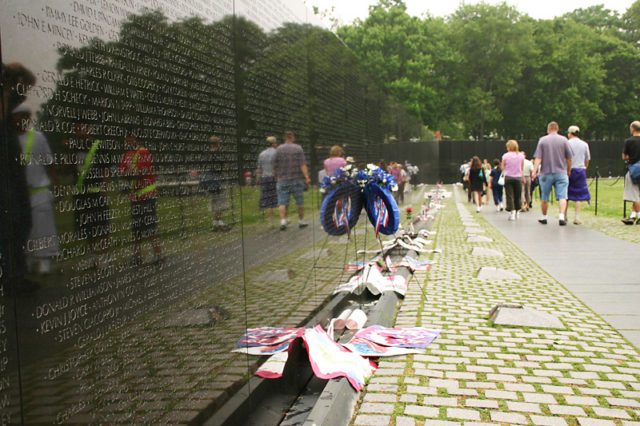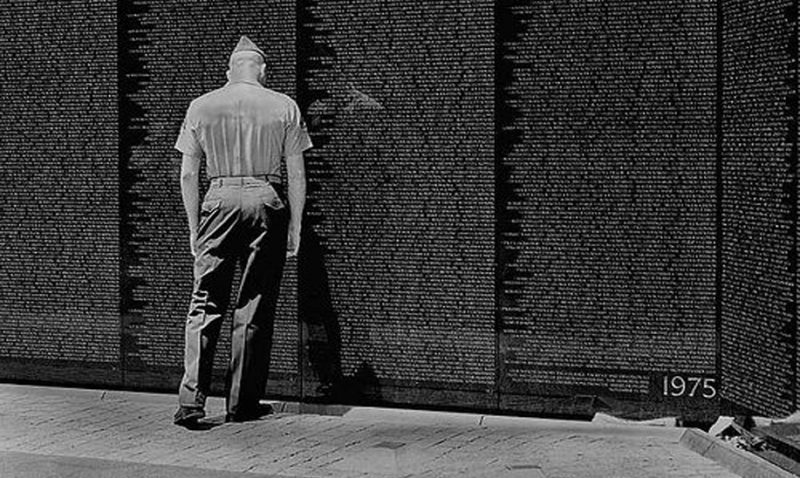Al Gallant, a volunteer guide at the Vietnam Veterans Memorial, described the sculpture left one day a month ago by three people who appeared to be their 60s as “macabre.”
It had a story, as do many of the 40,000 items left at the Wall since 1982. The item was the painted bust of an American serviceman. One side of the soldier’s face portrayed a smooth-skinned young man while the other showed an older, long-haired veteran with pockmarked features and a staring, weeping eye.
An army helmet on one side protected the top of the head. On the opposite side, the helmet and skull were removed by a cut to show the gray folds of the brain, engraved with slogans of war and the names of battles.
The dog tag adorning the sculpture had the name, blood type and religion of Army Pvt. Leo C. Buckley Jr. a Vietnam veteran of Walterboro, S.C. who in 2009 died of cancer at age 60.
The face, however, was that of Samuel Elliott, 73, a church deacon and a resident of Hendersonville, N.C., the artist who created the piece. Both men served in Vietnam, both saw combat, both had post-traumatic stress disorder. They didn’t know each other.

Buckley’s widow with two friends left the sculpture at the Wall which has the names of over 58,000 men and women killed in the war.
“Clay” Buckley served with the prestigious 173rd Airborne Brigade during the war. He lost a chunk of one leg to a land mine and spent 13 months recovering in various hospitals.
Elliott had been with an Army “survey” team, which, travelling by helicopter scouted out locations in the jungle for placing artillery. He was struck by shrapnel.
After the war, his life disintegrated, and he was in and out of a veteran’s hospital for counselling. Following a final stay in the 1990s, he began work on the sculpture to help himself heal, Stars and Stripes reported.
He had understood the dilemma faced by vets: a person may be back, but war memories are entrenched in the mind so deeply they can’t seem to flee from themselves, he explained.
An artist and writer, he did the first version of the sculpture using bronze as a form of personal therapy eleven years ago. He made 11 additional versions for fellow veterans.
He explained the sculpture’s two sides: “First, you‘re pleased to be an American soldier and ready to do your duty. Afterward, you feel scarred and wounded. You have aged, matured too fast, and come back an old man in spirit.”
